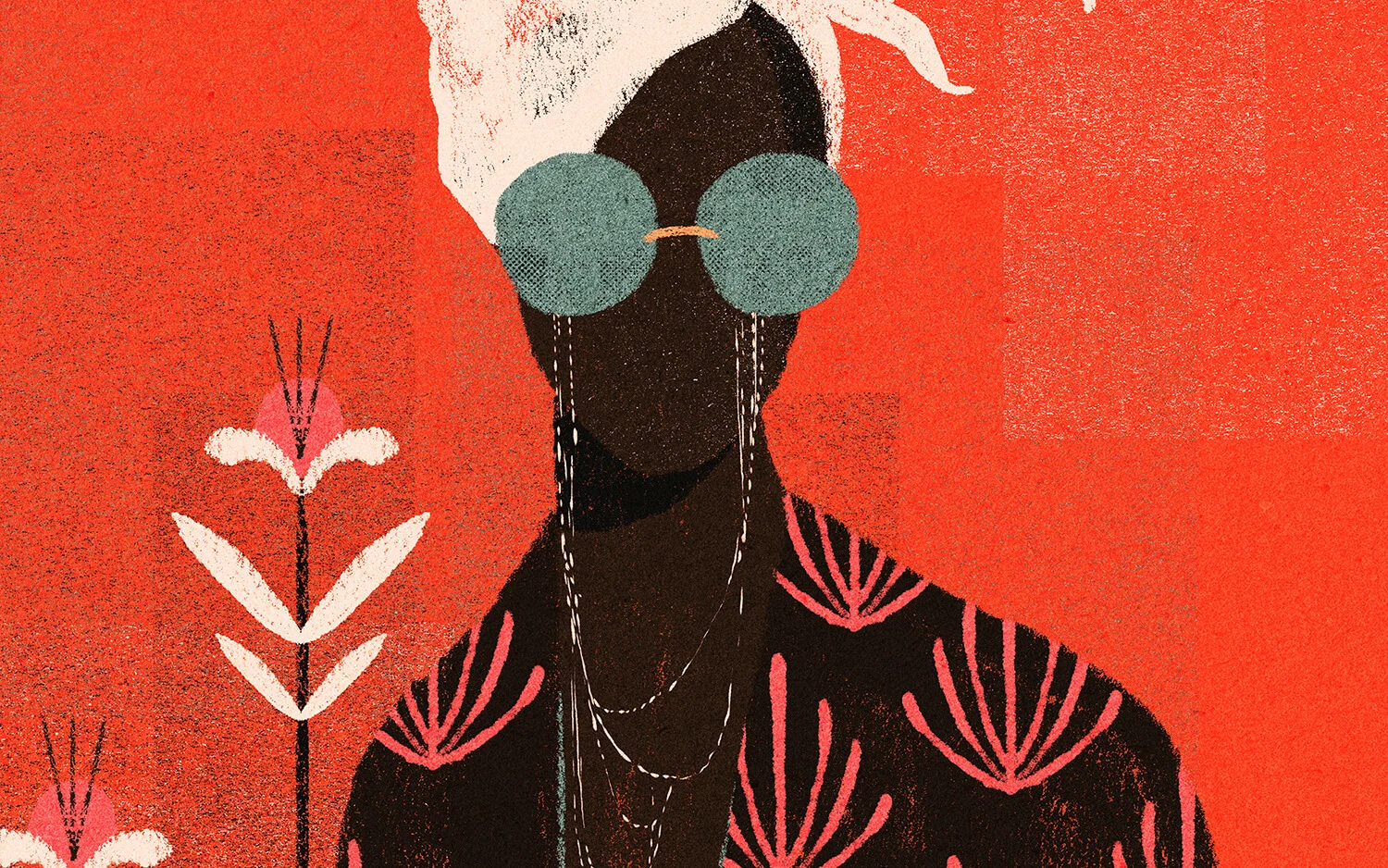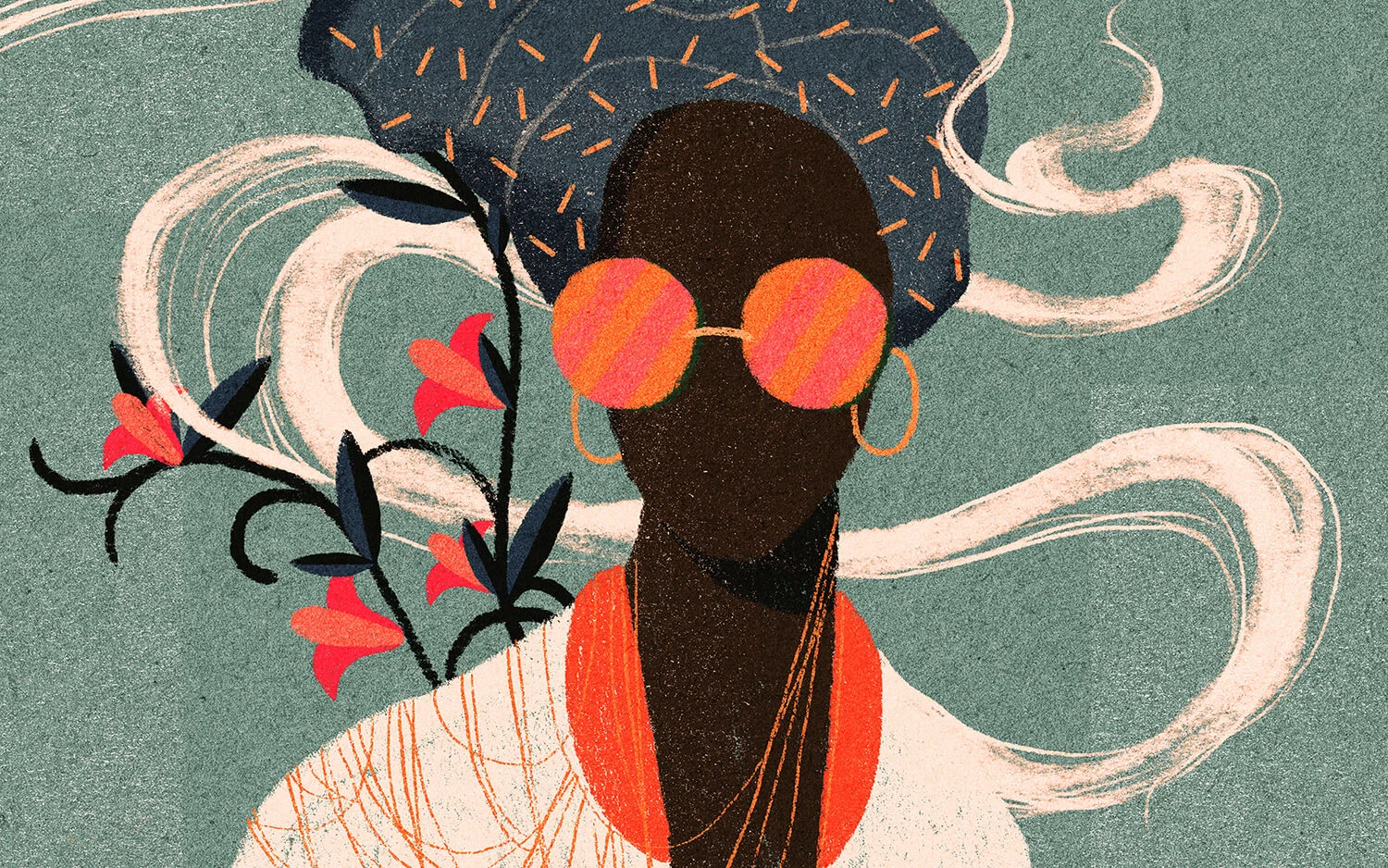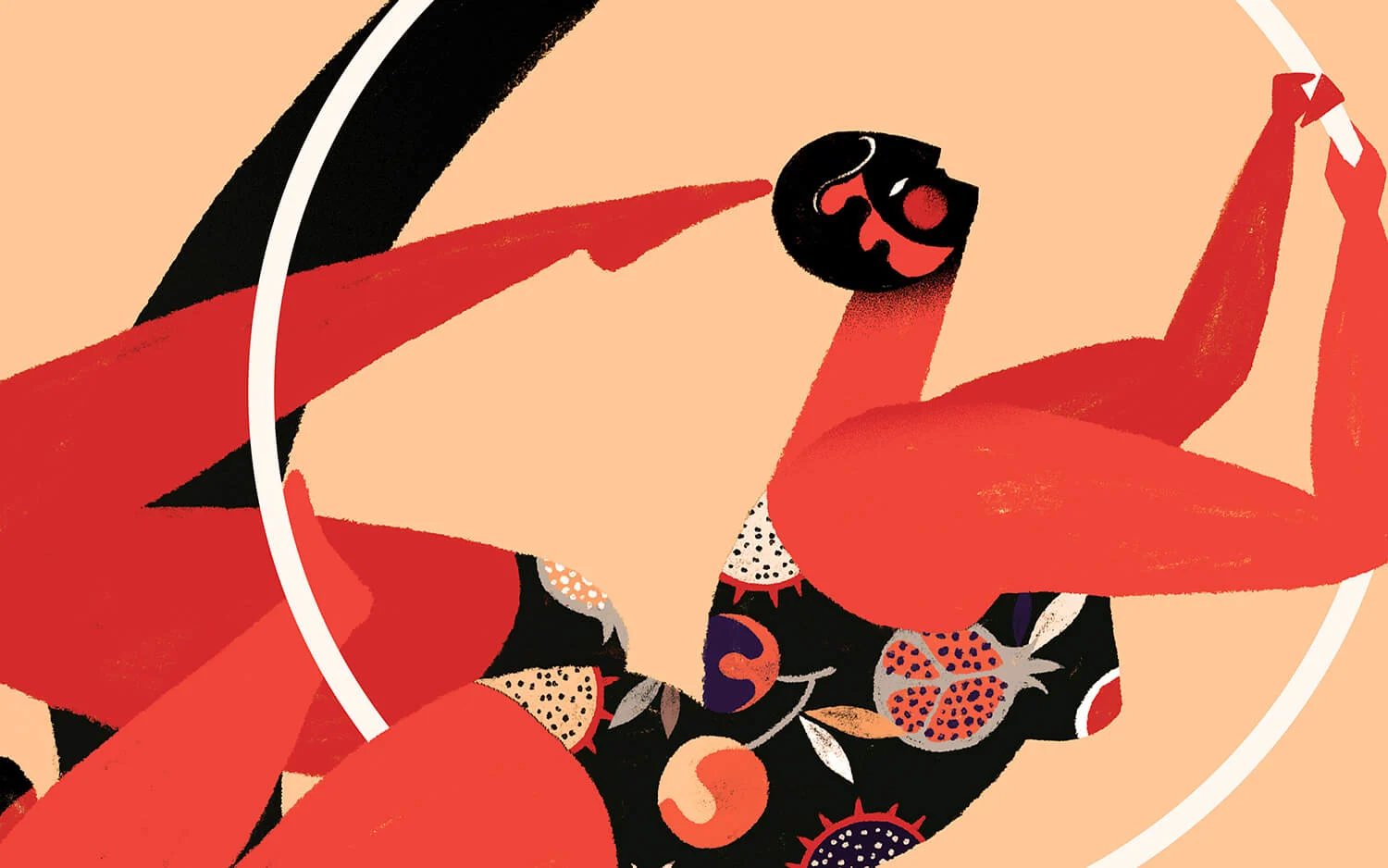
Lush vegetation and local wildlife — birds, monkeys and jaguars — spring out of the work of Brazilian illustrator Willian Santiago. They’re scenes he grew up surrounded by in Londrina, a small town in the south of Brazil.
Nowadays he keeps numerous plants in his house so he can feel close to this life force. “Nature is very spiritual for me,” he says. “It’s mystical. I use plant elements in my work whenever I can.”
Beyond its physical beauty, the culture of Brazil is Willian’s primary inspiration both visually and conceptually. “It’s a vast country, and very diverse,” he says. His father is from the north where there is a rich craft heritage, and whenever he’d travel back to his home town he’d bring back handmade pieces from the local artisans.

He’d also bring back cordel literature — cheaply printed booklets of folk stories and poems that hang from strings at markets and fairs. The covers were decorated with woodcuts and Willian’s style uses similar simple lines and block shapes.
Although the majority of his work is made digitally, Willian always tries to bring a sensitivity into his pieces with a handmade look. He develops textures by scanning old paper or layering marks made with crayons or splashes of paint.


This simple, realistic style works terrifically well for a whole range of subjects. The colorful, costumed clowns and musicians of Folia de Reis (which he created for Brazilian coffee brand Seis de Janeiro) come to life with witty exuberance; an old Christmas folk tradition made to feel fresh and modern.
Willian’s work uses a medley of colors but is often characterized by reds, greens and turquoises. As an image-maker, he sees color as his main focus.
“I love exploring,” he says. “It may be the step I spend most of my time on when creating an illustration. Color arouses different feelings in people. I ultimately want my work to create feelings of joy.”



Women reign in Willian’s personal work and they often appear with an animal — acting as a spirit guide or a clue to their character.
“I grew up surrounded by strong women,” he says, “and I think that has inspired my work.” He also thinks his “organic, delicate” style is well-suited to capturing a sense of femininity, often with a mystical edge. We see the likes of a trapeze artist, a white-haired being with stars on her dark skin and a woman with an entire village painted onto her blouse. This attention to detail perhaps comes from Willian’s previous work in fashion, where he designed prints and patterns for textiles. “I love old Vogue magazine covers, Art Deco and overly posed figures,” he says. Now the patterns on the dresses his characters wear tell elaborate tales, perhaps of where they come from, or where they’re going.
